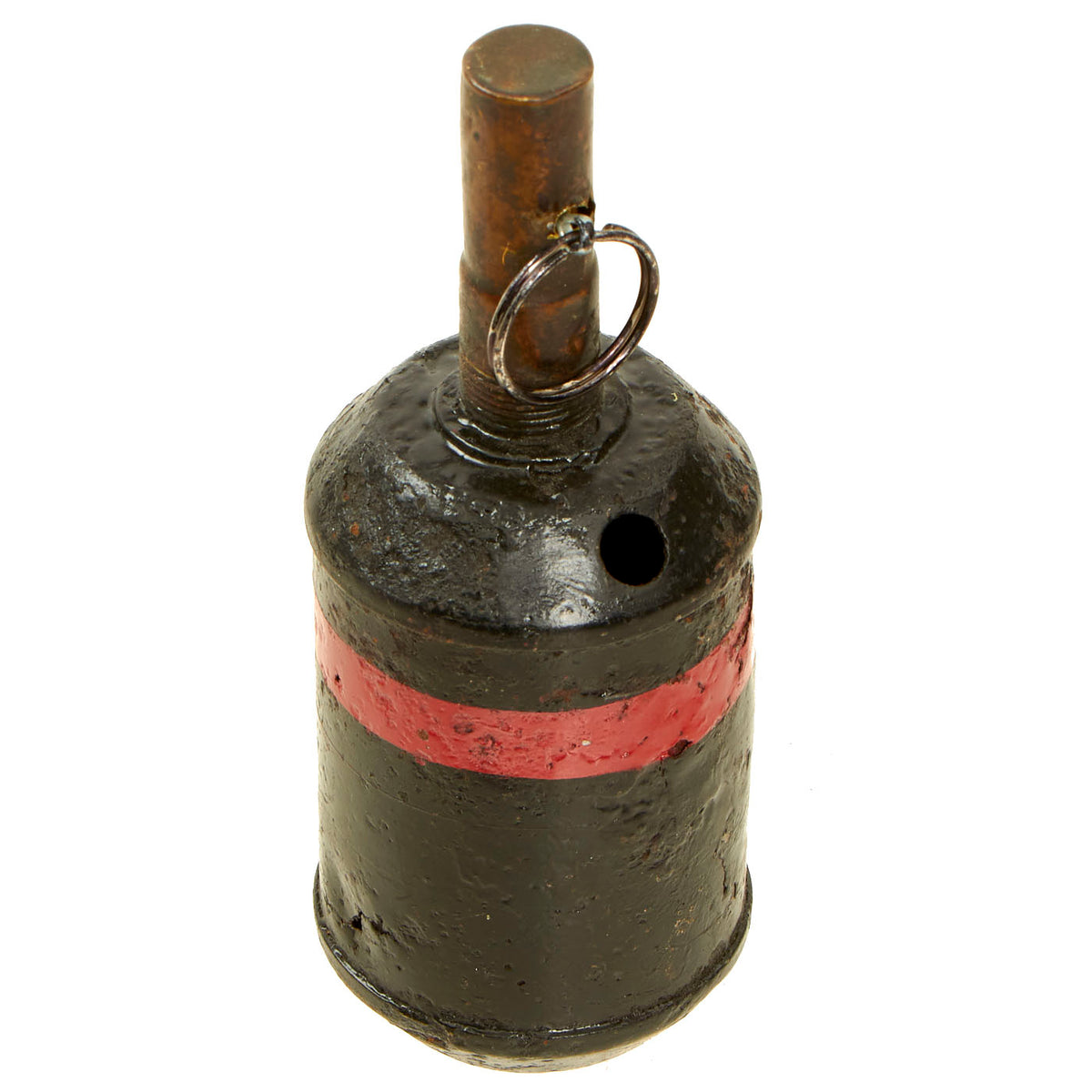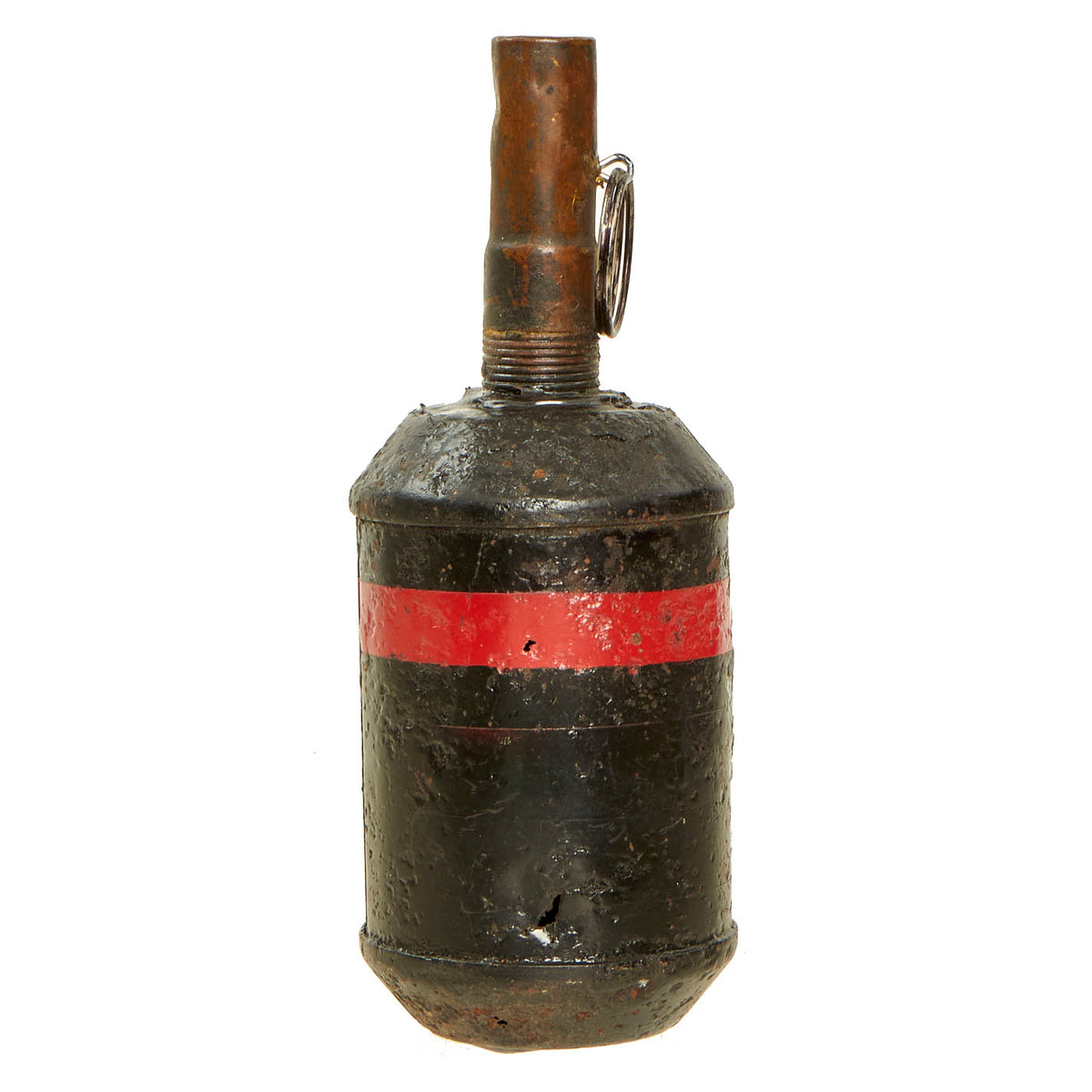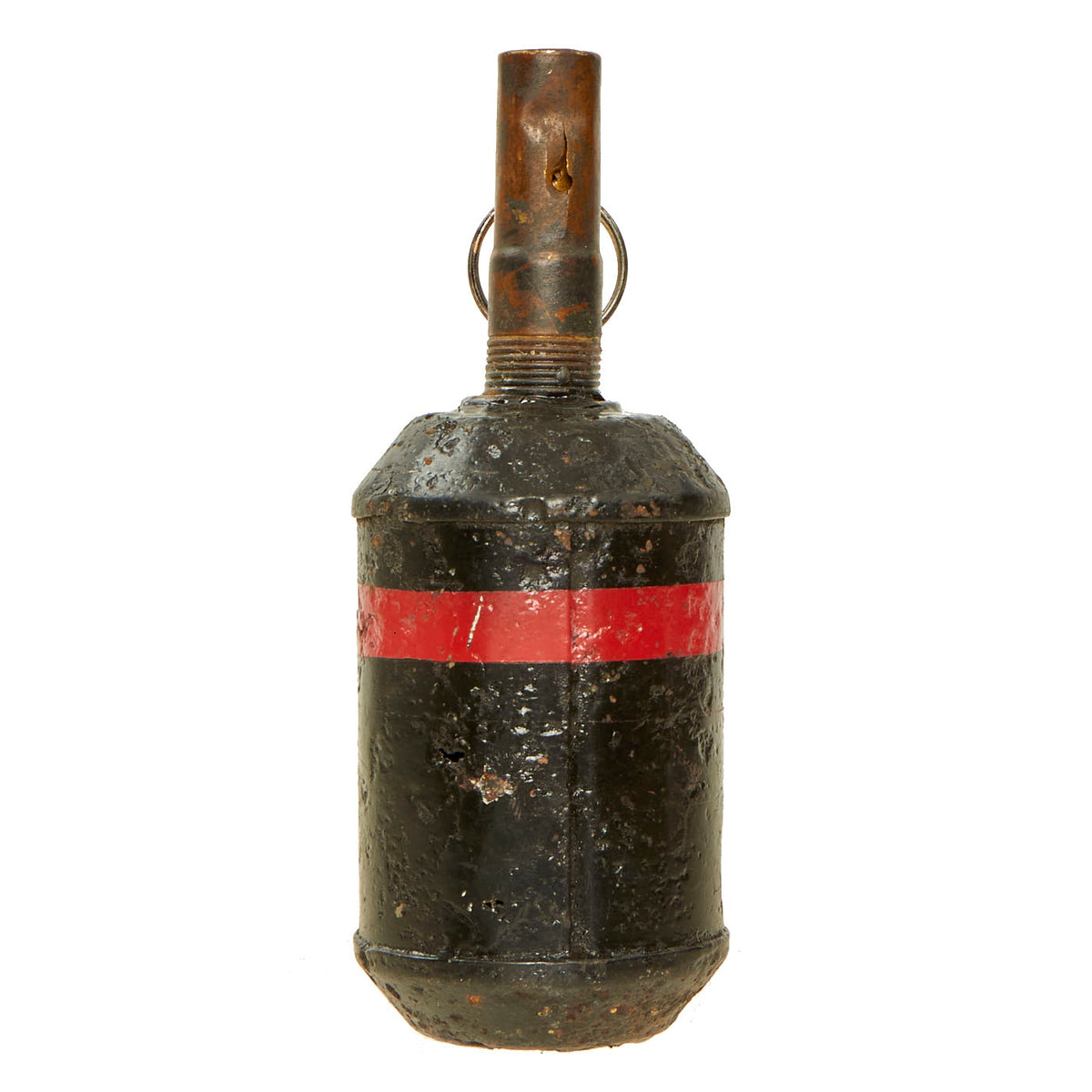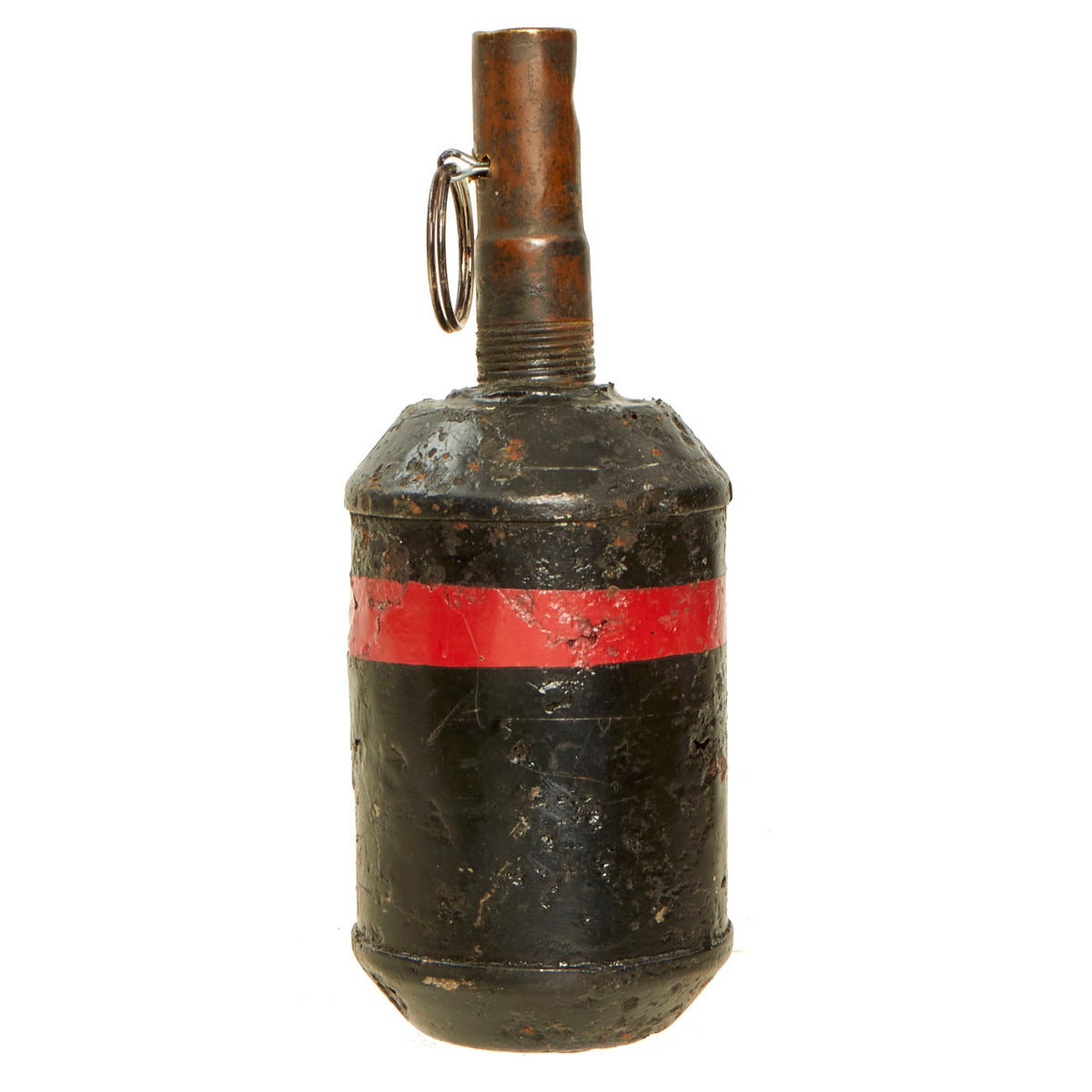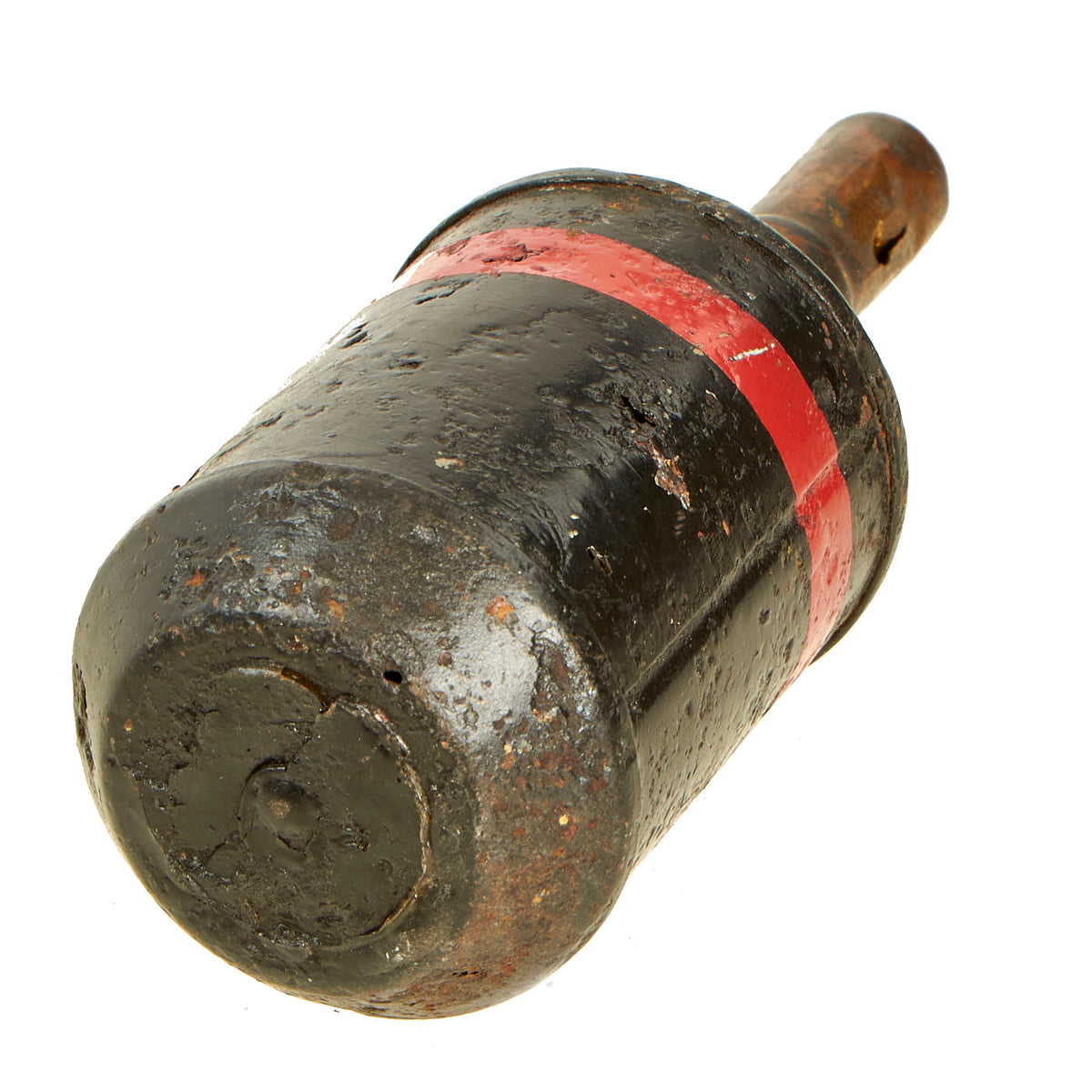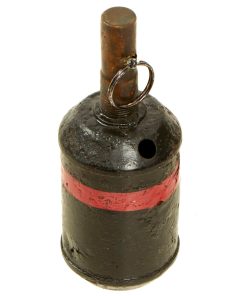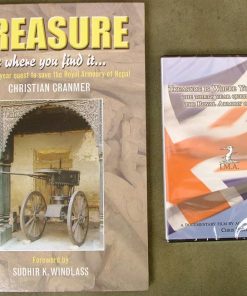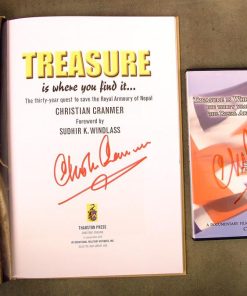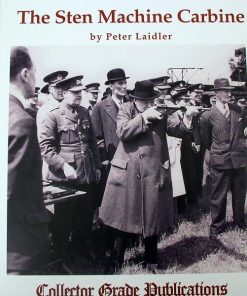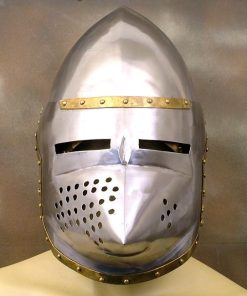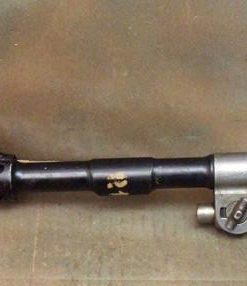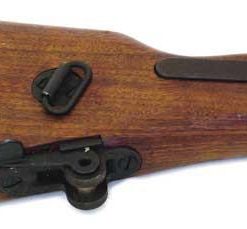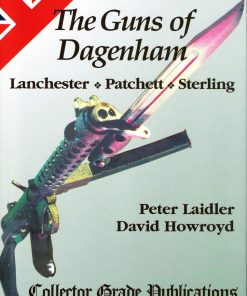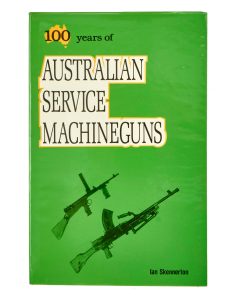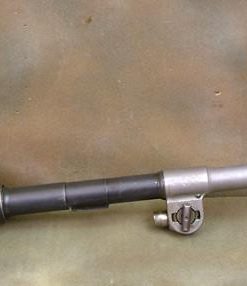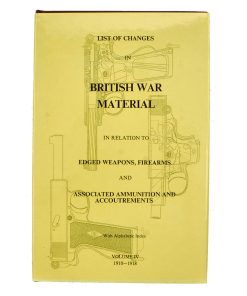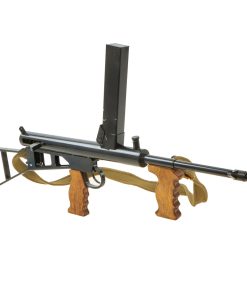Original British WWI No. 27 White Phosphorus Chemical Grenade – Inert / Empty Original Items
$ 395,00 $ 118,50
Original Item: Only One Available. This is a nice example of a WWI era No. 27 chemical grenade that was introduced in 1916. These grenades were filled with White Phosphorus, a highly efficient pyrophoric grenade that ignites spontaneously in air below 129 degrees or within 5 minutes of coming into contact with air. It burns fiercely; and can ignite cloth, fuel, ammunition, and other combustibles, one of the deadliest grenades that was used on the battlefield.
The grenade is completely void of any content and is equipped with a totally inert fuse assembly. The grenade is inert and unable to be used as a destructive device as per the guidelines established by the BATF on inert ordnance.
Not Available For Export.
This type of grenade was introduced in December of 1916 and was originally designed to be projected from a rifle using the standard cup and rod system as soon with the Mills bombs, and just like the mills bomb, this one could be thrown by hand as well. The MK2 version of this grenade was made with a flat base fitted with a “gas check” plate for launching from a cup discharger and can be easily recognized by the addition of a steadying wire ring around the top of the grenade body. The ignition system of these grenades was based on a .410 shotgun primer with a 6.5 to 7 second delay. The contents consisted of 350 grams of White Phosphorus. The use of these grenades was declared obsolete in January 1923.
The condition of this example reflects one that has been dug up from a distant battlefield after being buried for many years. The body was cleaned up and repainted for display purposes and is the correct all black body with red band around the top. There is old pitting present and oxidation, all signs of having been ground dug. The body itself is still solid with minor holes present from rust damage, but nothing that subtracts from the beauty of it.
This is grenade that is difficult to find in any condition, so to come across one that is intact is incredible, even if it was repainted. The pull pin is a replacement but does not subtract from the displayability of it!
Comes more than ready for display!
Chemical weapons in World War I
The use of toxic chemicals as weapons dates back thousands of years, but the first large scale use of chemical weapons was during World War I. They were primarily used to demoralize, injure, and kill entrenched defenders, against whom the indiscriminate and generally very slow-moving or static nature of gas clouds would be most effective. The types of weapons employed ranged from disabling chemicals, such as tear gas, to lethal agents like phosgene, chlorine, and mustard gas. This chemical warfare was a major component of the first global war and first total war of the 20th century. The killing capacity of gas was limited, with about 90,000 fatalities from a total of 1.3 million casualties caused by gas attacks. Gas was unlike most other weapons of the period because it was possible to develop countermeasures, such as gas masks. In the later stages of the war, as the use of gas increased, its overall effectiveness diminished. The widespread use of these agents of chemical warfare, and wartime advances in the composition of high explosives, gave rise to an occasionally expressed view of World War I as “the chemist’s war” and also the era where weapons of mass destruction were created.
The use of poison gas by all major belligerents throughout World War I constituted war crimes as its use violated the 1899 Hague Declaration Concerning Asphyxiating Gases and the 1907 Hague Convention on Land Warfare, which prohibited the use of “poison or poisoned weapons” in warfare. Widespread horror and public revulsion at the use of gas and its consequences led to far less use of chemical weapons by combatants during World War II.
Fast Shipping with Professional Packaging
Thanks to our longstanding association with UPS FedEx DHL, and other major international carriers, we are able to provide a range of shipping options. Our warehouse staff is expertly trained and will wrap your products according to our exact and precise specifications. Prior to shipping, your goods will be thoroughly examined and securely secured. We ship to thousands clients each day across multiple countries. This shows how we're dedicated to be the largest retailer on the internet. Warehouses and distribution centres can be located throughout Europe as well as the USA.
Note: Orders with more than one item will be assigned a processing date depending on the item.
Before shipping before shipping, we'll conduct a thorough inspection of the items you have ordered. Today, the majority of orders will be delivered within 48 hours. The delivery time will be between 3-7 days.
Returns
The stock is dynamic and we cannot completely manage it because multiple stakeholders are involved, including our factory and warehouse. So the actual stock may alter at any time. It's possible that you may not receive your order once the order has been made.
Our policy is valid for a period of 30 days. If you don't receive the product within 30 days, we are not able to issue a refund or an exchange.
You can only return an item if it is unused and in the same state as the day you received it. You must have the item in its original packaging.
Related products
Uncategorized
Book: Small Arms ID by Ian Skennerton: .303 Pattern 1914 Rifle & Sniping New Made Items
Uncategorized
Book: Small Arms ID by Ian Skennerton: .303 Rifle, No. 1, S.M.L.E Marks II & III New Made Items
Uncategorized
Book & DVD Combo: Treasure is Where You Find It: Signed Collector Editions New Made Items
Uncategorized
Uncategorized
Uncategorized
Uncategorized
Uncategorized
Armored Burgonet Helmet & Polearm from Scottish Castle Leith Hall Circa 1700 Original Items
Uncategorized
Uncategorized
Uncategorized
Australian WWII Owen MK1 Machine Carbine SMG Custom Fabricated Replica with Sling Original Items
Uncategorized
Uncategorized
Uncategorized
Uncategorized
Australian WWII Owen MK1 Machine Carbine SMG Custom Fabricated Replica with Sling Original Items
Uncategorized
Uncategorized
Uncategorized
